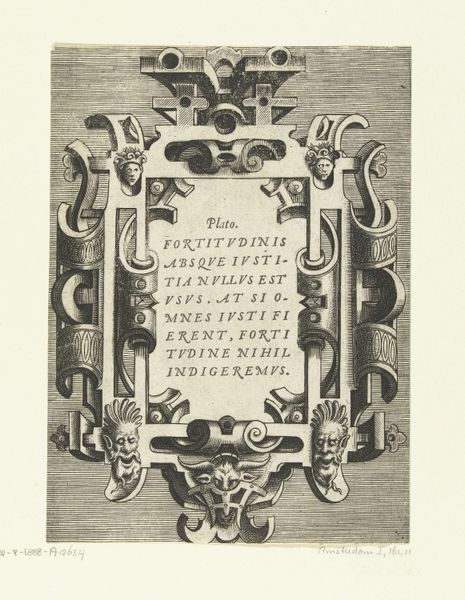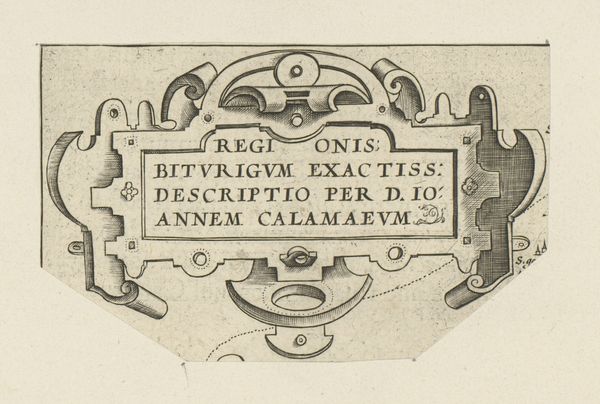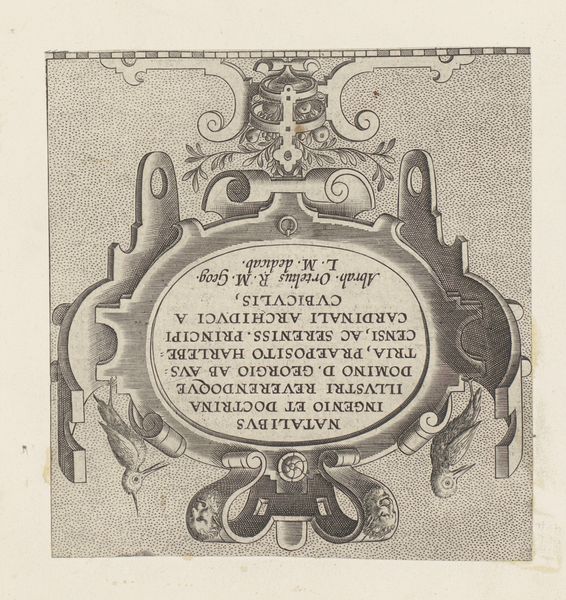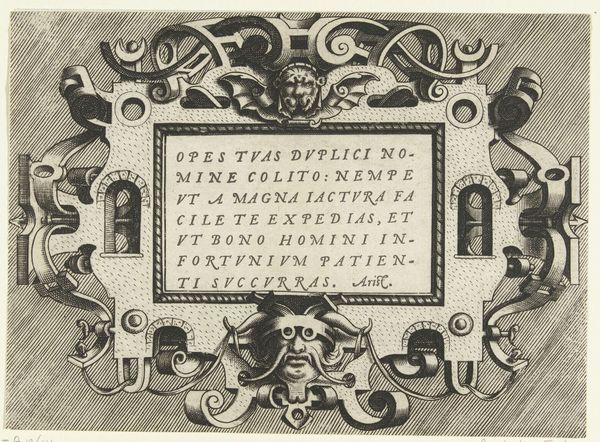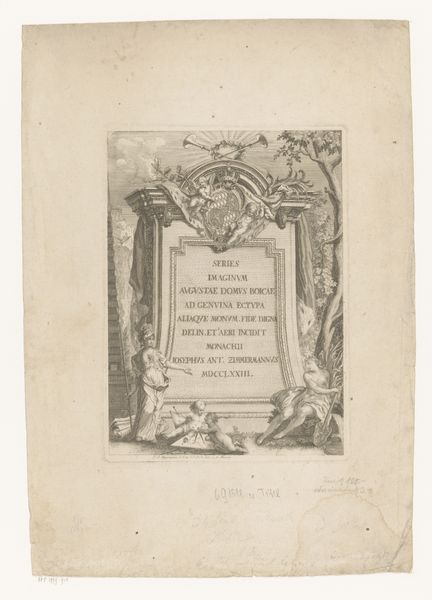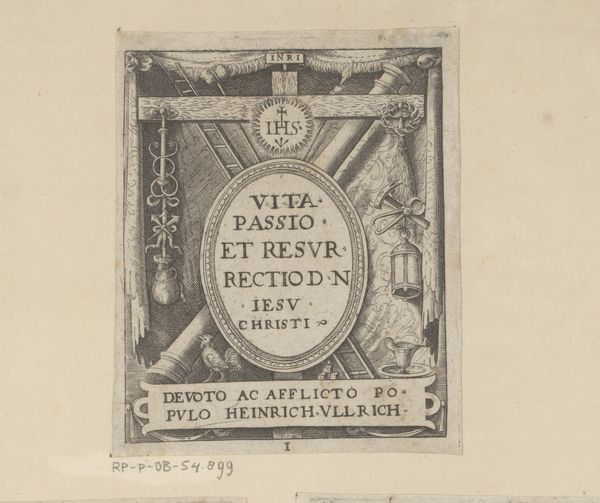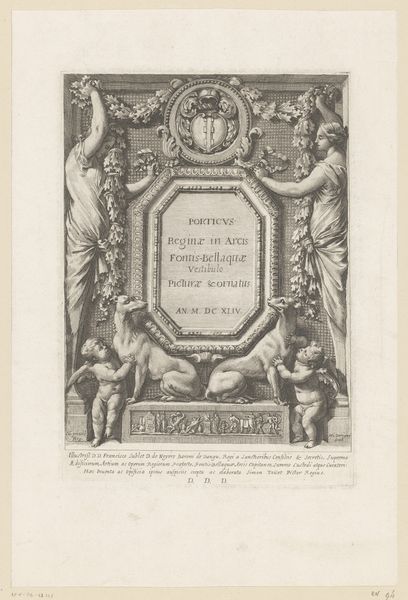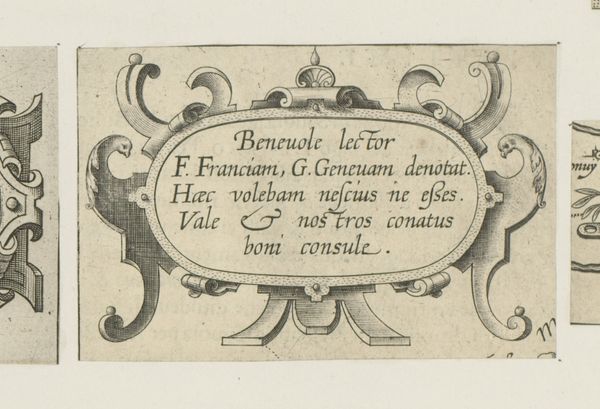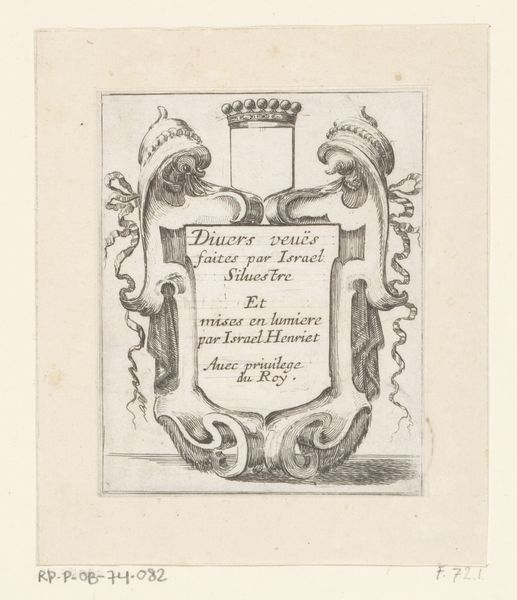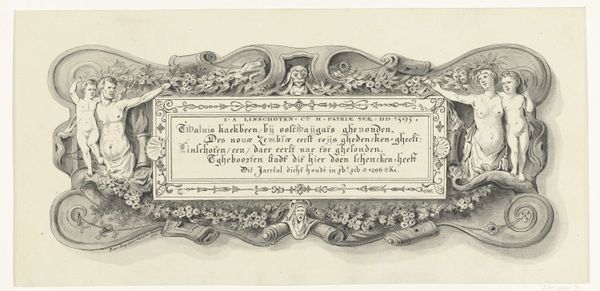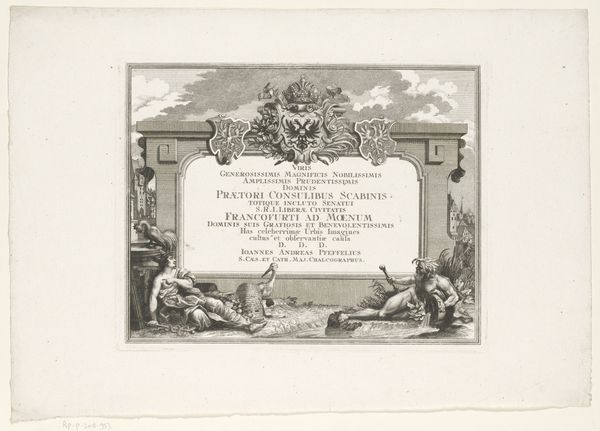
print, engraving
# print
#
11_renaissance
#
geometric
#
engraving
Dimensions: height 87 mm, width 98 mm
Copyright: Rijks Museum: Open Domain
Editor: Here we have a print entitled “Cartouche met twee slingers,” made in 1584 by an anonymous artist. It's an engraving, giving it that precise, linear feel. I’m immediately drawn to the craftsmanship. What stands out to you? Curator: The question of craft is key here. Engraving, as a reproductive medium, highlights the labor involved in image production and distribution in the 16th century. Consider the socioeconomic context: Who was producing these prints? For whom were they made? Editor: So, you’re saying to look beyond the image itself and think about the hands that made it, and who had access to it? Curator: Precisely. The print's materiality--the paper, the ink, the metal plate--tells a story about the economic and social conditions of its creation. The geometric design itself, is also not divorced from that social context. How were such designs generated and distributed? Editor: That’s interesting. I hadn’t thought about the distribution of artistic labor like that. The print feels very decorative and formal. But your interpretation pulls it into a broader system of production and consumption. Curator: It's about understanding how this object participated in a larger network of artistic and economic exchange. To really understand it, we should study other engravings from the same period to grasp what it tells us about standardization in printmaking at this moment. Editor: It's really helpful to re-contextualize even these more ornamental artworks into that larger world of labor and economy. Curator: Right, so even geometric engravings and simple materials reflect much larger art distribution systems during the Renaissance.
Comments
No comments
Be the first to comment and join the conversation on the ultimate creative platform.
